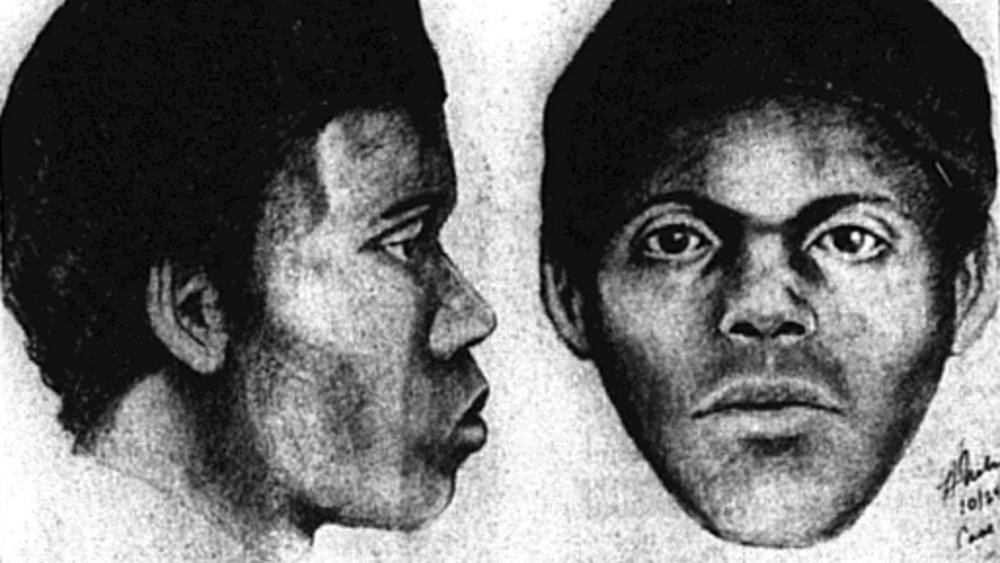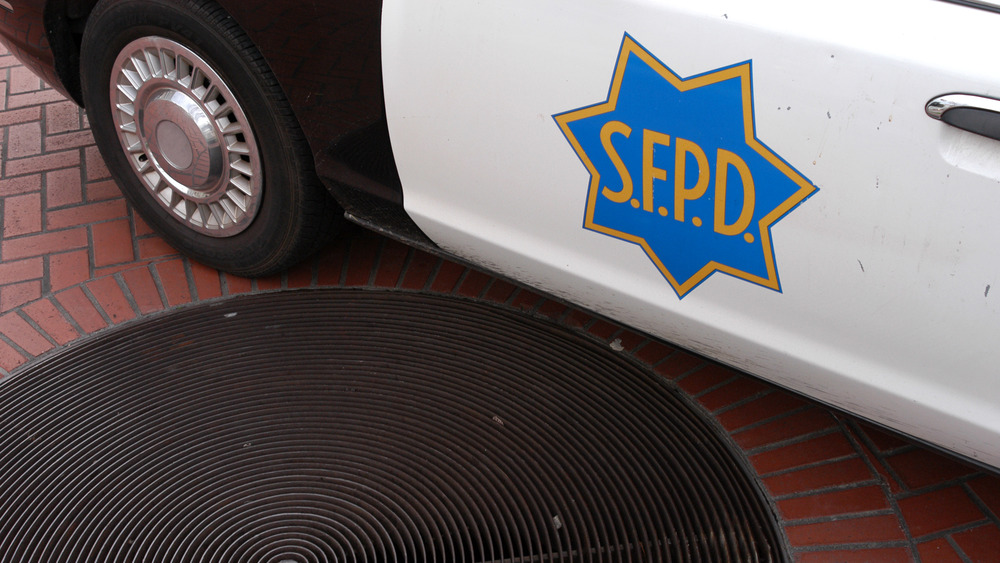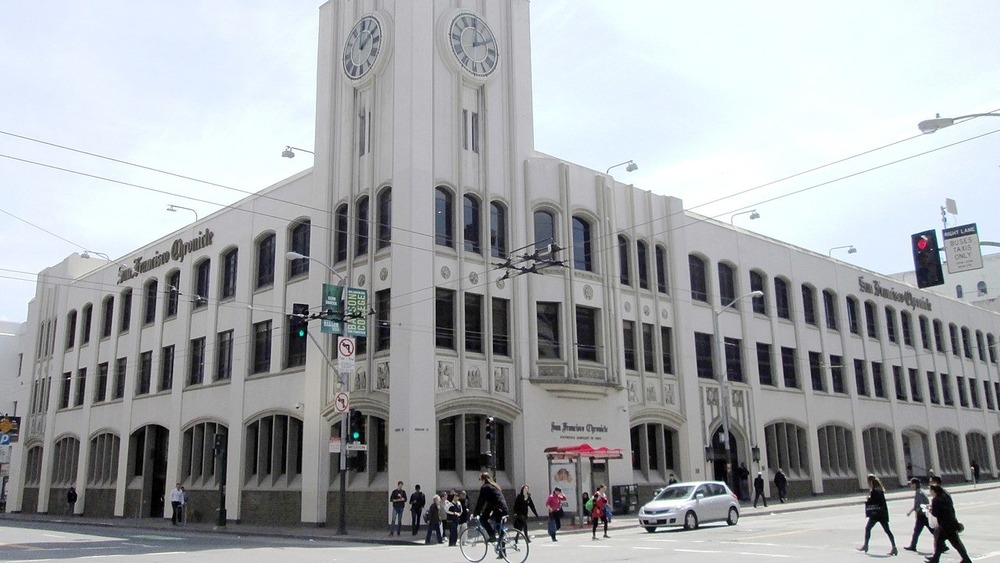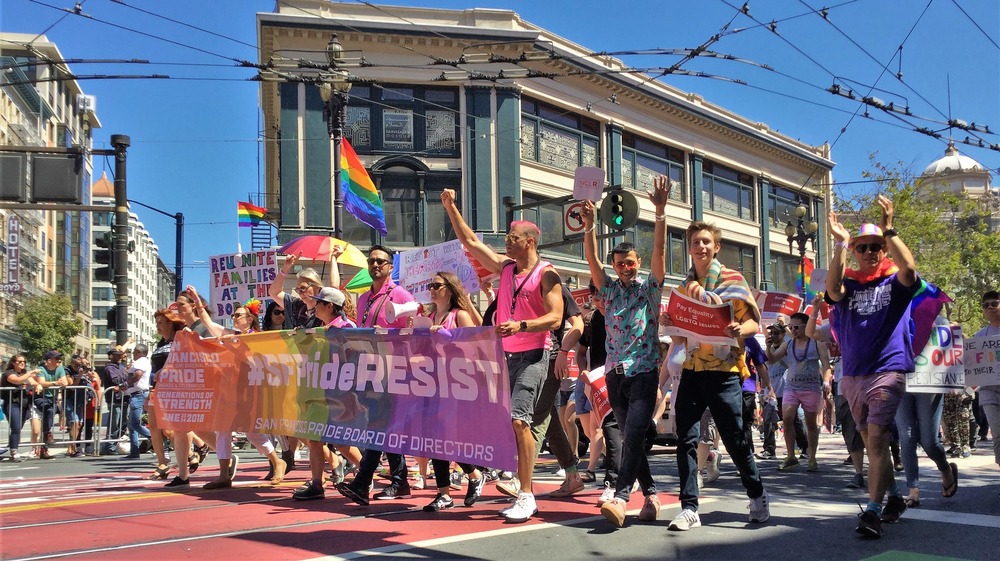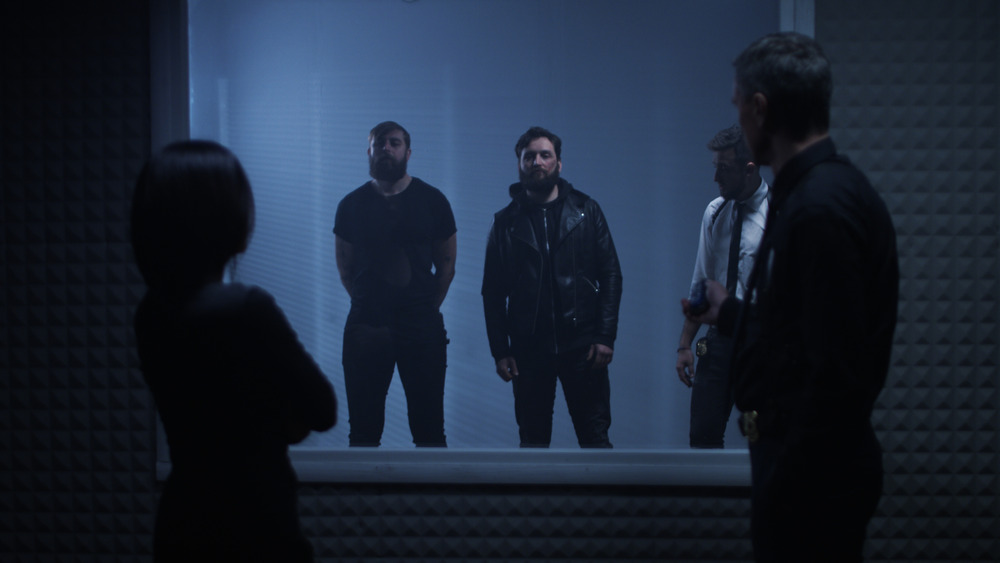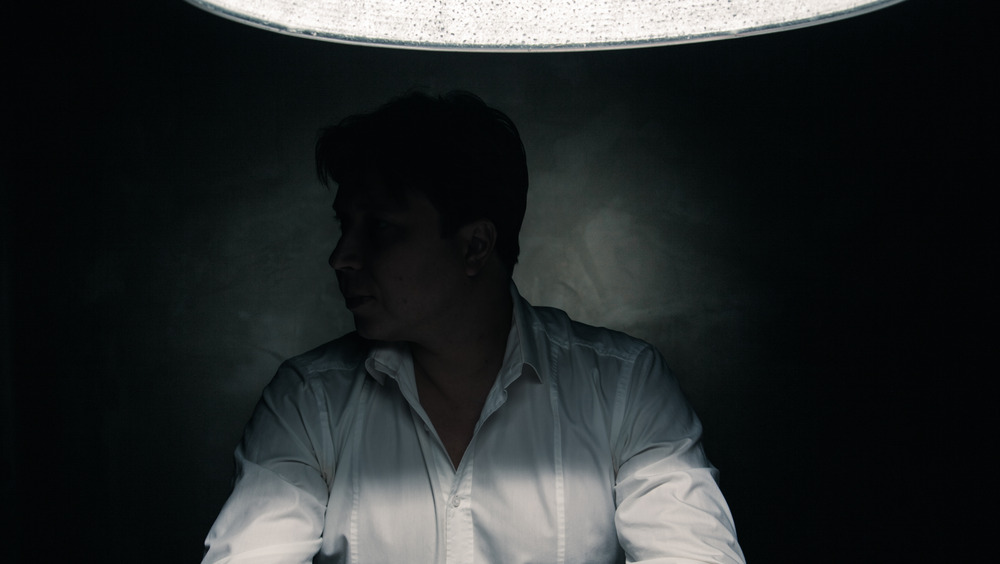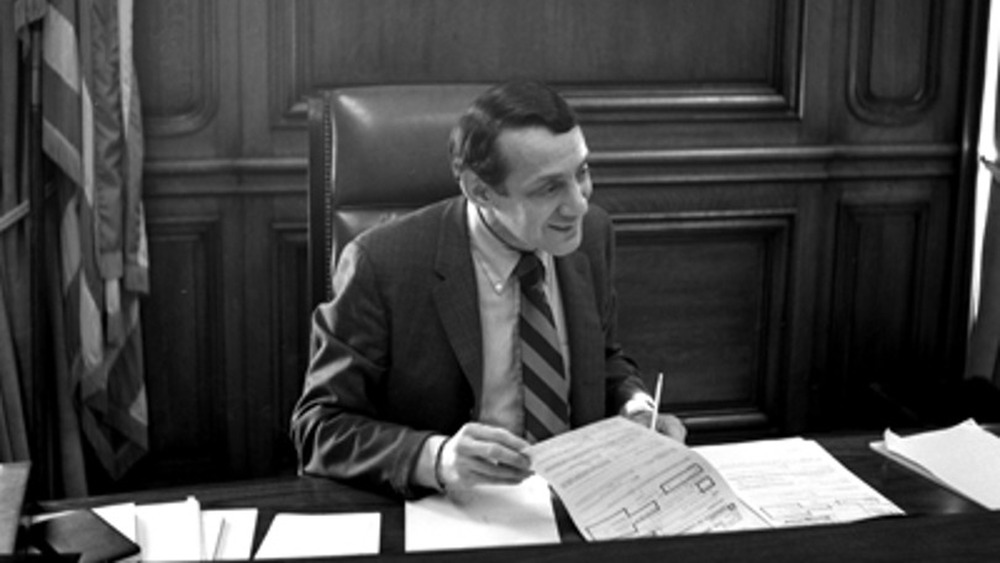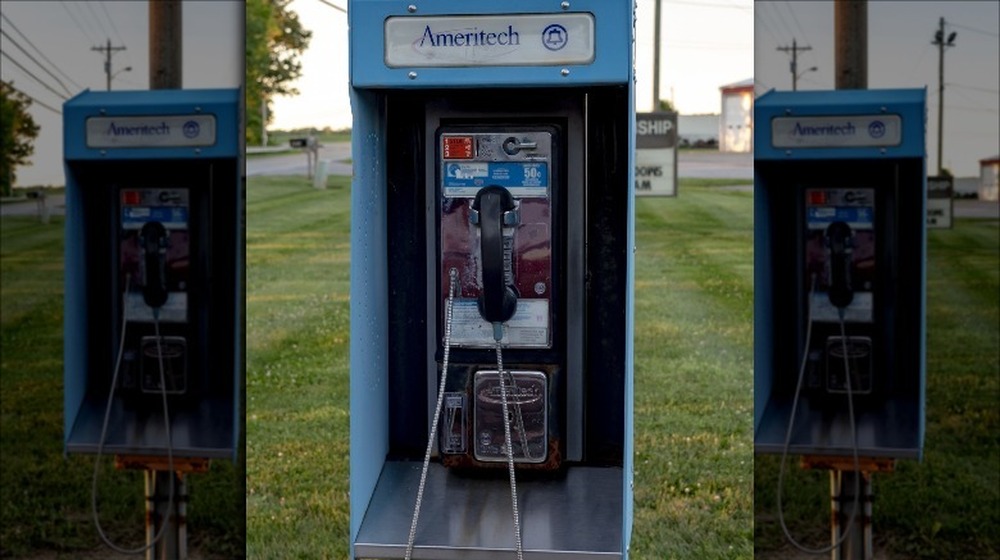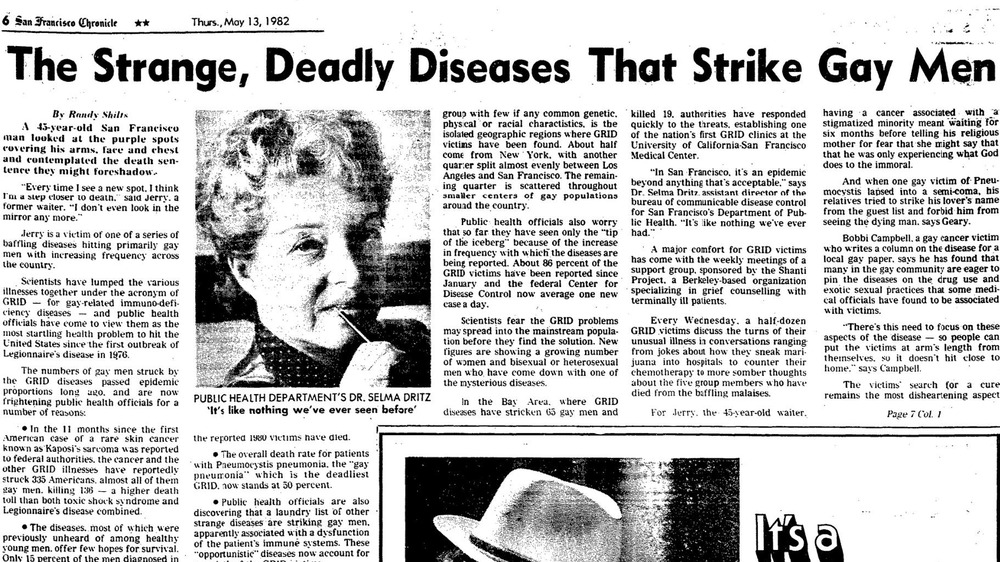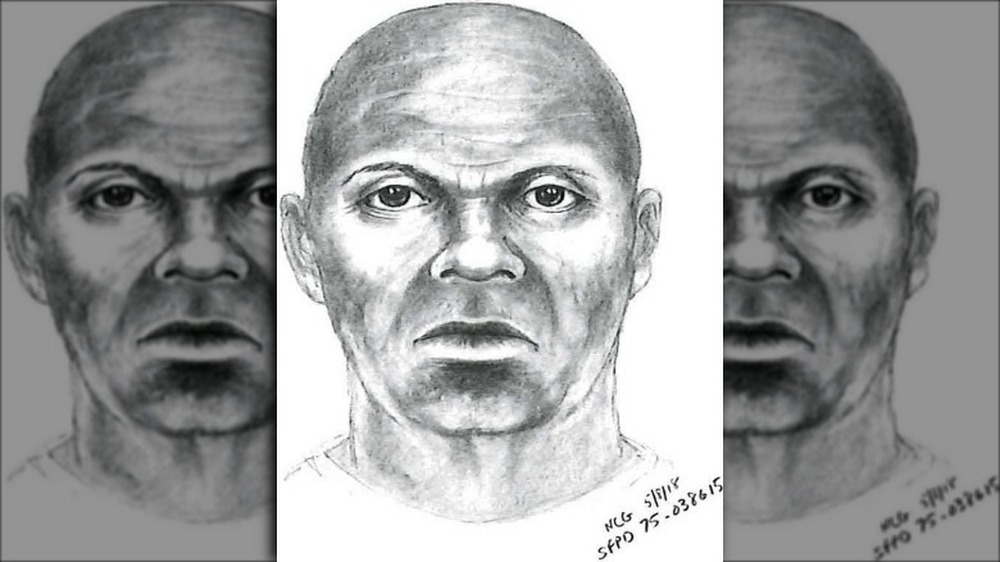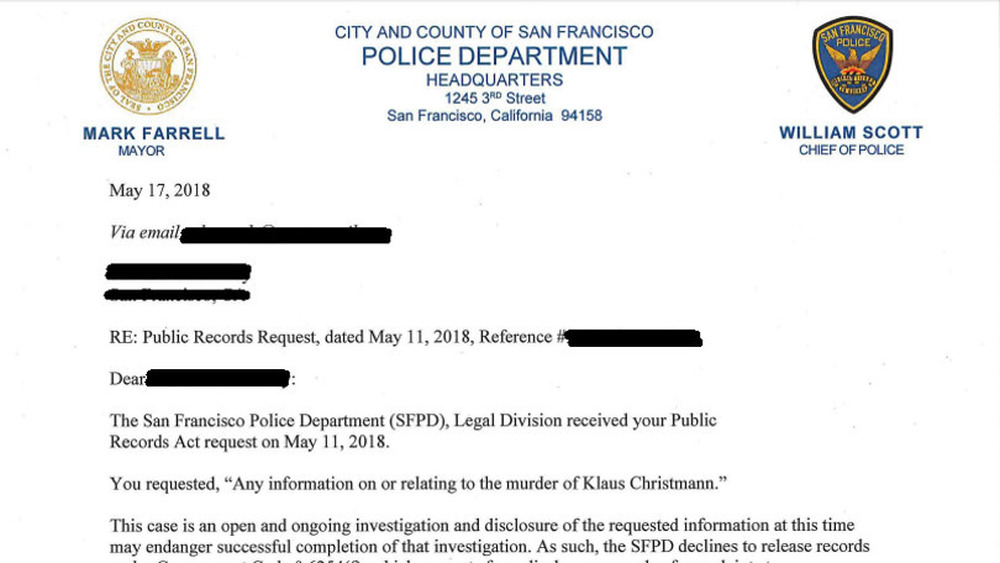The Doodler: The Truth About The Unidentified Serial Killer
Whatever it says about us as a species, humans are fascinated by serial killers. The extremity of their evil is incomprehensible to most people. A crime of passion we can understand, even if we can't condone or forgive it, but a methodical series of killings that make murder into something of a hobby is just so horrifyingly alien we can't help but pay attention. Books are written about serial killers, movies are made, and like Dexter or Hannibal Lecter they can even be antiheroes of a sort. We're so obsessed with serial killers just about everyone can name at least a few of the most famous ones—The Son of Sam, The Zodiac Killer, Ted Bundy, for example, are all more or less household names.
So it's curious to come across a real-life serial killer with an unusual and remarkable modus operandi who is also almost completely unknown. Living in the age of true crime podcasts and endless internet content, it's hard to understand how a lurid series of unsolved murders could remain so under the radar, but that's the case with a serial killer who killed several gay men in 1970s San Francisco. Despite having a silly serial killer name, they're a terrifying murderer who has never been caught. Dubbed "The Doodler," here's the truth about the unidentified serial killer explained.
The Doodler got his name because he sketched his victims
"The Doodler" might sound a little silly for a serial killer, but there's nothing funny about him. And the idea of a serial murderer sketching his victims might sound like something out of a bad TV show, but as the San Francisco Chronicle reports it was very real. In San Francisco during 1974 and 1975, a serial killer hunted gay men in the city. He earned his nickname because he literally sketched his victims before killing them.
According to SF Gate, the Doodler's approach was to visit gay bars and nightclubs, identify a likely victim (always a white man), sketch his chosen victim, and then use the "doodle" as a charming pickup line. The he would suggest they go somewhere private to have sex, and stab his victims to death.
Even creepier (if that's possible), Deadline reports that the Doodler would leave those sketches behind at the crime scene, like some sort of historical record of his presence. Nearly 50 years later the police have never released any of the Doodler's sketches—though they have turned the tables on the killer by releasing two sketches of what they think he looked like in 1975 and what he might look like now.
No one's sure how many victims there were
One of the saddest aspects of the story surrounding the Doodler is the fact that we don't really know for sure how many men he killed. As noted by the San Francisco Chronicle, there are five confirmed victims of the Doodler—but there might be as many as 14.
The reason for this uncertainty is due to the Doodler's chosen victims and the state of San Francisco at the time. The Doodler was described as a "good-looking" young man who had some real drawing skill, making it easy for him to charm his victims. The Doodler exclusively attacked white, gay men. San Francisco—especially its Castro neighborhood—was seen as a safe haven for homosexuals at the time, but there was still plenty of discrimination and even violence against the LGBTQ community, which makes it hard to pick out the Doodler's victims.
San Francisco was also a more dangerous city at the time. As noted by Alta Online, there were 129 murders in San Francisco in 1974 alone (for comparison, there were 48 in 2020 and 41 in 2019), and the city was dealing with the infamous racially-motivated Zebra Murders. All of this combines to obscure just how many men the Doodler actually killed.
The media didn't care about The Doodler
If you're wondering how a serial killer whose M.O. involved sketching his victims, flirting with them in public, then stabbing them repeatedly (seriously, where is the movie based on this?) has remained virtually unknown for nearly 50 years, the answer is depressingly simply: Prejudice.
As Thought Catalog notes, the mainstream media completely ignored the murders at the time because the victims were all gay men. 1974 may seem relatively recent, but the American Psychiatric Association had only just recently stopped classifying homosexuality as a mental disorder, and the Stonewall Riots had taken place just five years before. Being homosexual—even in liberal San Francisco—was still a stigma for many.
As noted by The Awl, it was up to the local LGBTQ media to report on the Doodler's serial killings. The Advocate and The Sentinel each brought attention to the murders, but the San Francisco Chronicle didn't write a story explicitly about the Doodler until long after his last victim had been identified. And as noted by the San Francisco Chronicle itself, its reporting on his first victim, Gerald Cavanaugh, notably failed to mention that he was a gay man. When larger mainstream media finally reported on the killings, they tended to take a prurient tone—one headline read "The Sado Murder Horror."
The police didn't care, either
The anti-gay sentiment that kept the Doodler out of the mainstream press also meant that the police took a less-than energetic approach to the killings. As the San Francisco Chronicle notes, sodomy was illegal in California until 1976, and the police in San Francisco spent a lot of time raiding gay bars and arresting homosexuals despite the city's reputation for tolerance.
In fact, as reported by The Awl, some San Francisco police spent an inordinate amount of time entrapping gay men by pretending to be prowling for hookups in areas where gay men congregated. And gangs of young men roamed the streets looking for homosexuals to harass and violently attack. The local LGBTQ community regarded the police as not much better than these gangs, and so began organizing for their own protection, forming civilian patrols complete with walkie-talkies to try to defend themselves.
When the Doodler began killing gay men, one thing was immediately clear: The police could not be relied on to take the investigation seriously, because they weren't terribly concerned with the welfare of the LGBTQ community living in their city at the time. Some speculate that the Doodler may have targeted gay men for this precise reason: Because he knew his chances of getting away with murder would be better.
The police originally thought there were multiple killers
While the Doodler has just five official victims, it's suspected he may have killed as many as 14. There's one fundamental reason for this uncertainty: Most serial killers have a very narrow "type" when it comes to victims, but as History Collection notes the Doodler's potential victims could be divided into three categories: Drag queens, sadomasochists, and middle-class men. The violence against drag queens made it seem like this was a killer who hated transvestites, while the attacks on the patrons of San Francisco's leather bars and the well-to-do professionals of the more upscale gay bar scene seemed to be the work of different killers entirely.
Author Michael Newton explains, this led the police to initially believe they had three different killers enacting three distinct serial murders. Clouding the issue even further, the Doodler was inconsistent in his precise method—some of the victims were horribly mutilated, while others were stabbed repeatedly but not disfigured. This contributed to the mistaken belief that there was more than one killer.
It took the police some time to figure out that all of the victims were linked by the Doodler's artwork, and they had a single killer on their hands. But this early confusion means we may never be entirely certain how many men the Doodler killed.
The police probably know who The Doodler is
The craziest aspect of the Doodler case? The police probably know who he is. In fact, they have probably interviewed him multiple times.
As reported by Thought Catalog, in 1976 two men were attacked separately at an apartment complex in San Francisco. The police were able to create a sketch of what the assailant looked like, and came to believe the attacks were linked to the Doodler's murders. In 1977, the San Francisco police revealed that they had, in fact, been talking to a suspect for a year. They said that the suspect had been very happy to talk to them, but had never confessed to the crimes.
As USA Today reports, the police were stymied because three men who had possibly almost been victims of the Doodler refused to testify in the case because it would mean coming out of the closet and being revealed as gay. They were more afraid of anti-gay prejudice than being murdered, and without their cooperation the police couldn't build a case. Chillingly, in 2019 the police confirmed that this man was still alive—and was still a person of interest in the Doodler case.
One of the men who refused to testify was famous
The San Francisco Police thought they had their man in 1976. After several failed attacks on gay men, they brought in a person of interest for questioning based on the descriptions the victims gave. But just when it seemed like progress was finally being made in the case, everything fell apart and the police were forced to let the suspect walk free.
What happened? The three men who were attacked refused to testify publicly because it would require them to admit they were homosexuals. In 1976, even in San Francisco, this was an extremely dangerous thing to do. As reported by The Awl, Harvey Milk, the first openly gay elected official in California's history, defended their decision, saying, "I respect the pressure society has put on them. They have to stay in the closet."
And the men may have had a lot to lose. As noted by Alta Online, one of the three witnesses was a foreign diplomat—and another was a "nationally known" entertainer—i.e., a celebrity. The celebrity reportedly grew nervous and left San Francisco shortly after their interview, and to this day no one knows who it was.
The first tip is a mystery too
The Doodler's first victim was Gerald Earl Cavanaugh, who was found on Ocean Beach in San Francisco on January 27, 1974. As reported by The Awl, Cavanaugh was fully clothed, had been stabbed multiple times, and sported defensive injuries indicating he'd attempted to fight off his attacker.
As Thought Catalog tells us, Cavanaugh's body was reported to police via an anonymous 911 call made at 1:25AM that day. The caller said, "I believe there might be a dead person on the beach. I thought I saw somebody lying there, but I didn't want to get too close to him because you never know what could happen." They never identified themselves, and the call was made from a nearby public phone. While some have speculated the caller might have been the Doodler himself vying for attention, the police want the person to come forward so they can get more information. In 2019, they even released the audio of the call in the hope of identifying the caller.
As Alta Online notes, the release of the audio (accompanied by a new, aged sketch of the suspect) hasn't led to any fresh leads in the case. Which isn't too surprising considering the murders occurred nearly 50 years ago, making it increasingly probable that the key figures involved are no longer with us.
The Doodler may have confessed to his psychiatrist
The fact that a man who killed at least five and possibly as many as 14 people has never been identified—and may still be alive today—is terrifying. It becomes almost inexplicable when USA Today informs you that the police had a "person of interest" in 1976 but were forced to let him walk free when witnesses refused to testify—and that the killer may have confessed to his psychiatrist.
As reported by Alta Online, in 1977, the San Francisco Sentinel reported that a local psychiatrist had informed the police that one of his patients had confessed to being the Doodler. Yet nothing ever came of this bombshell, and no arrests were ever made.
Even more incredible, in 2019—more than 40 years later—the police apparently have no clear idea who the psychiatrist was. As noted by Thought Catalog, when the case received fresh attention that year, the police asked for information regarding the identity of the doctor, who they believe had the surname "Priest." The psychiatrist had apparently reported that his patient was struggling with his own homosexuality and was killing in response to his own conflicted feelings. Somehow, the doctor's identity wasn't preserved, and it took the police four decades to follow up on this information.
A new crisis took focus from The Doodler's victims
Even considering the rampant homophobia of the 1970s, it's remarkable how quickly the Doodler's horrifying rampage was almost totally forgotten. After his last confirmed victim in 1975, this serial killer preying on gay men seemed to just vanish, aside from a few mentions in the local LGBTQ press—as The Awl notes, in 1978 the Crusader ran a story with the headline "POLICE ARE 'NOWHERE' ON DOODLER KILLINGS."
One reason the Doodler seemed to slip into the cracks of history is the time period. The late 1970s were a window of time in the LGBTQ community when old laws and restrictions were being lifted and attitudes were (slowly) changing, but a global crisis was looming: AIDS. As noted by Thought Catalog, when HIV began ravaging the ranks of LGBTQ people (the first case of what would become known as AIDS was reported in 1981) the deaths of even 14 men in San Francisco suddenly seemed small. The local gay media, which had done the most to keep the Doodler in the public's thoughts, began focusing their energy on covering the emerging health crisis, and the Doodler became a footnote.
The Doodler killings stopped in 1975
No one knows why the Doodler suddenly began killing gay men in 1974—and no one knows why he apparently stopped. Alta Online reports that his last known victim—Harald Gullberg—was found in June 1975, and the Doodler was never heard from again, as far as we know.
According to The Awl, Gullberg was 66-years-old and was dying slowly from cirrhosis when the Doodler murdered him. His body lay in a remote part of a Lincoln Park golf course for about two weeks before it was discovered, so we're not even totally sure when the murder actually occurred. Gullberg's throat had been slashed and he lay with his pants undone.
Tragically, it wasn't until after the Doodler apparently stopped killing that the police finally began to take the case more seriously. As noted by Thought Catalog, a month later several men were attacked at an apartment complex, and this led to the first reliable descriptions of the killer. Five months after Gullberg's murder, the police released a composite sketch of the suspect, describing the Doodler as Black, between 19- and 22-years-old, between five foot ten and six feet tall, and slim. The police even had a person of interest in the case, but when witnesses refused to testify nothing came of it. Perhaps realizing how close he'd come to being caught, the Doodler never killed again—as far as we know.
The Doodler case remains open
As The San Francisco Chronicle reports, interest in the Doodler case surged in 2018 when retired detective Dan Cunningham joined the San Francisco Police Department's Cold Case division and took it up. Cunningham's renewed investigation led to media attention, and spurred the police to reconsider the long-dormant case.
One problem Cunningham and journalists ran into immediately: After 45 years, many of the key figures from the original investigation are dead. As noted by ABC News, the police have attempted to get fresh energy into the case by releasing an updated composite sketch that shows what the suspect might look like in the modern day—and offering a $100,000 reward for information that leads to the Doodler's arrest. The police also released audio of the original 911 call that led police to the Doodler's first victim, hoping to speak with the anonymous caller.
And according to Reuters, inspired by the success in the Golden State Killer case the police also submitted DNA evidence from the 1974 and 1975 killings in hopes of triggering new data—but so far nothing has been triggered as a result. The case remains open—and very, very cold.
